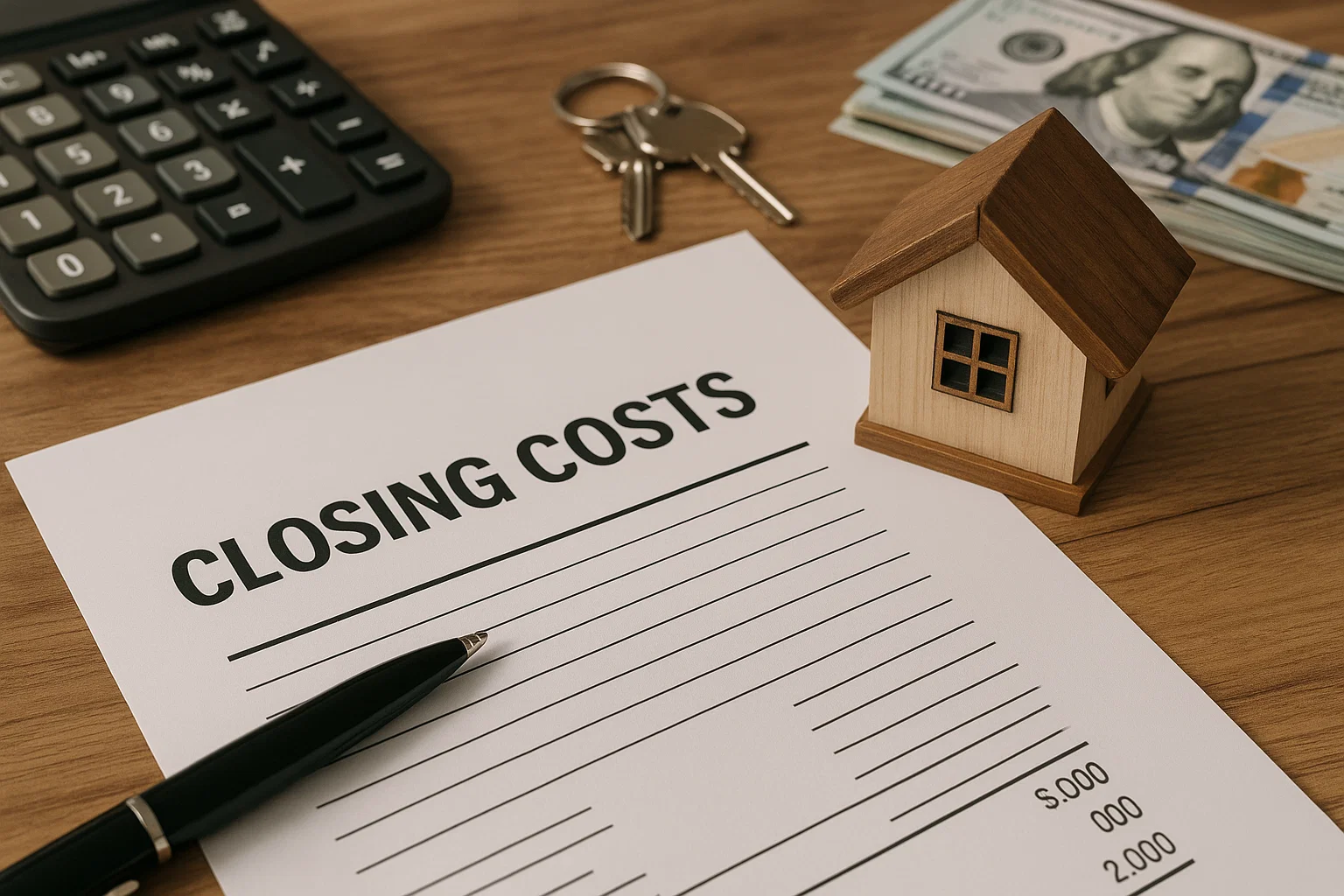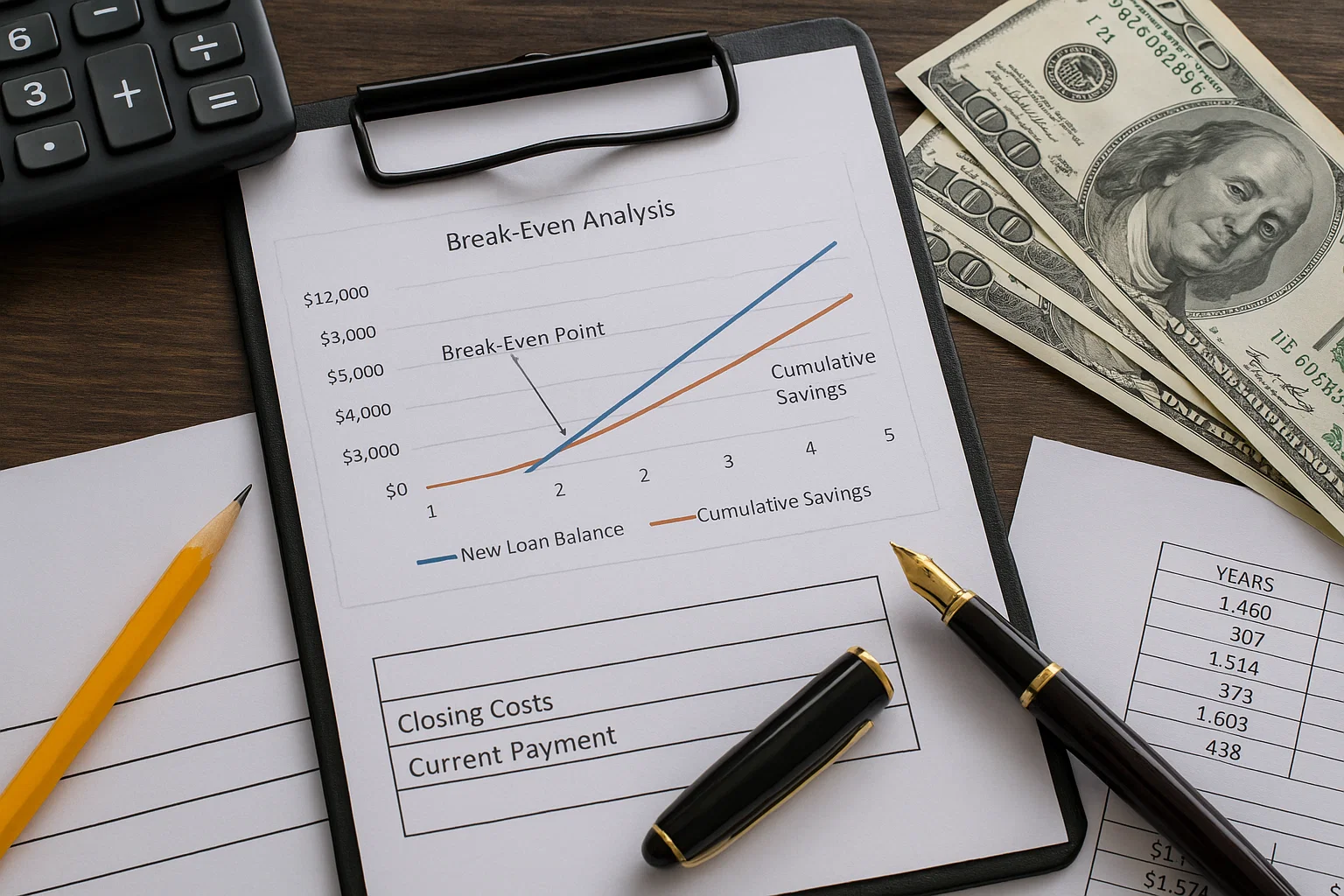The Most Costly Refinancing Mistakes Homeowners Make (And How to Avoid Them)
November 19, 2025
.png)
Mortgage refinancing offers homeowners powerful opportunities to save money, reduce monthly payments, and optimize their largest financial obligation. Yet despite these attractive benefits, countless homeowners make preventable mistakes that transform promising refinancing opportunities into disappointing outcomes—or worse, financial setbacks that leave them worse off than before they started.
These mistakes aren't the result of bad intentions or willful negligence. Most stem from incomplete information, understandable misconceptions, or simply not knowing what to watch for in a complex process involving unfamiliar terminology and high-stakes decisions. The difference between successful refinancing that delivers substantial long-term value and problematic refinancing that costs more than it saves often comes down to avoiding a handful of critical errors that trap even financially savvy homeowners.
This comprehensive guide examines the most common and costly refinancing mistakes, explains why they're problematic, and provides practical strategies for avoiding them so your refinancing delivers maximum value rather than disappointing results.
Mistake 1: Focusing Exclusively on Interest Rates
The single most pervasive refinancing mistake involves fixating on interest rates while ignoring other critical factors that determine whether refinancing truly serves your financial interests. Advertisements trumpet rate reductions, lenders compete aggressively on headline rates, and conventional wisdom suggests that lower rates automatically mean better deals. This narrow focus blinds homeowners to total costs, loan terms, and structural factors that often matter more than rate differences.
Consider two refinancing offers: Lender A quotes 6.25% with $15,000 in closing costs, while Lender B offers 6.50% with $8,000 in closing costs. Most homeowners reflexively choose Lender A based on the lower rate without calculating that the extra $7,000 in closing costs takes years to recover through the modest monthly savings from the 0.25% rate difference. On a $300,000 loan, that quarter-point difference saves approximately $45 monthly—meaning you'd need 155 months (nearly 13 years) to recover the additional closing costs. If you plan to move or refinance again within a decade, Lender B delivers better value despite the higher rate.
The solution requires evaluating complete loan structures rather than isolated rate numbers. Compare Annual Percentage Rates (APRs) that incorporate both interest and fees for more accurate cost comparisons. Calculate break-even timelines showing how long monthly savings take to recover closing costs. Model total interest paid over complete loan terms to understand lifetime costs rather than just monthly payments. Consider loan features including prepayment flexibility, offset accounts, and payment structure options that might matter as much as rate differences.
Remember that the lowest advertised rate often comes with conditions—perfect credit scores, large loan amounts, or specific property types. Your actual qualified rate might differ substantially from marketed rates, making comparison shopping based on personalized quotes essential rather than relying on generic rate advertisements.
Mistake 2: Extending Loan Terms Without Calculating Total Costs
Many homeowners refinance primarily to reduce monthly payments, accepting whatever loan term achieves this goal without considering long-term implications. Extending your loan term—perhaps from 20 remaining years to a new 30-year mortgage—dramatically lowers monthly obligations but often increases total interest paid by tens of thousands of dollars despite securing lower interest rates.
Suppose you have 18 years remaining on your current mortgage with a $280,000 balance at 7% interest, paying approximately $2,350 monthly. Refinancing to 6.5% for 18 years reduces payments to $2,200—saving $150 monthly. However, refinancing to 6.5% for 30 years drops payments to $1,770—saving $580 monthly and appearing far more attractive for immediate cash flow relief.
The catch? That 30-year refinance adds 12 years of payments (144 additional months), and despite the lower rate, you'll pay approximately $45,000 more in total interest over the loan's life compared to maintaining your current mortgage. The extra $7,000 annually in cash flow over the first 18 years gets obliterated by 12 additional years of payments totaling $250,000+ when you should have been mortgage-free.
Avoid this mistake by calculating total interest over complete loan lives rather than focusing exclusively on monthly payment changes. If immediate cash flow relief matters most, consider refinancing to your current remaining term rather than automatically accepting 30-year terms. Alternatively, refinance to 30 years but commit to making extra principal payments that effectively create a shorter amortization while maintaining the flexibility to reduce payments if circumstances change.
Mistake 3: Not Shopping Multiple Lenders Competitively
Loyalty to your current lender might feel comfortable, but it typically costs thousands of dollars compared to competitive shopping across multiple institutions. Current lenders often assume existing customers won't shop around and offer less competitive terms than they provide new customers they're actively pursuing. They're not required to offer you their best available rates simply because you've been paying them faithfully for years.
Research consistently shows that borrowers who obtain quotes from only one lender pay significantly more over their loan's life than those who compare at least three to five options. Even small differences—a quarter point in interest rates or $2,000 in closing cost variations—compound into substantial amounts over 15-30 years. Yet convenience, inertia, and misplaced loyalty prevent most homeowners from investing a few hours in competitive shopping that could save $20,000-50,000 over their loan's duration.
Obtain detailed Loan Estimates from at least three to five lenders including traditional banks, credit unions, and online mortgage companies. Each serves different market segments with varying rate structures, fee schedules, and underwriting flexibility. Use competing offers as negotiating leverage—many lenders will match or beat competitors' terms rather than lose qualified borrowers. Don't accept first offers or assume your initial quotes represent final prices; negotiation often yields better terms for borrowers willing to advocate for themselves.
Mistake 4: Ignoring or Underestimating Closing Costs

Refinancing involves substantial closing costs—typically 2-6% of your loan amount—that many homeowners underestimate or ignore when evaluating refinancing value. These costs include appraisal fees, origination charges, title insurance, attorney fees, recording costs, and various administrative expenses that quickly accumulate into five-figure totals on typical mortgages.
Some homeowners focus exclusively on lower monthly payments without calculating how long it takes to recover closing costs through those savings. Others roll closing costs into their loan balances without recognizing they'll pay interest on those costs for decades—effectively tripling their actual expense through accumulated interest charges.
Before refinancing, obtain detailed closing cost estimates from every lender you're considering. Calculate your break-even point by dividing closing costs by monthly savings to determine how many months of payments are needed before cumulative savings exceed upfront expenses. Ensure your realistic homeownership timeline extends well beyond this break-even point—staying only slightly longer than break-even means you've essentially paid thousands for minimal net benefit.
If you're rolling closing costs into your loan, calculate the total interest you'll pay on those costs over the loan's life. A $10,000 closing cost rolled into a 6.5% mortgage costs approximately $13,000 in additional interest over 30 years—making your actual refinancing cost $23,000 rather than the nominal $10,000 figure.
Mistake 5: Refinancing Before Checking and Improving Credit
Your credit score fundamentally determines the interest rates and terms you qualify for, yet many homeowners apply for refinancing without first checking their scores or addressing issues that might be lowering them. Even modest score improvements of 20-30 points can shift you into better rate tiers that save thousands over your loan's life, making credit optimization before applying one of the highest-return activities available to refinancing candidates.
Credit scores aren't mysterious black boxes—they're calculated based on factors you largely control including payment history, credit utilization, account age, credit mix, and recent inquiries. Simple improvements like paying down credit card balances, correcting errors on credit reports, avoiding new credit applications, and maintaining consistent payment records can boost scores meaningfully within weeks or months.
Before applying for refinancing, check your credit scores from all three major bureaus and review complete credit reports for errors or negative items you can address. If your score falls near the boundary of better rate tiers—perhaps 695 when 700 unlocks improved pricing—invest several months optimizing credit before applying rather than rushing into refinancing at suboptimal rates you're stuck with for years. The time spent improving credit often delivers better financial returns than the time saved by applying immediately with marginal scores.
Mistake 6: Making Major Financial Changes During Refinancing
Refinancing requires stable financial profiles that demonstrate reliable income, controlled debt, and predictable circumstances that support long-term payment obligations. Yet homeowners frequently make major financial changes during the refinancing process—changing jobs, opening new credit accounts, making large purchases, or taking on new debt—that jeopardize approvals or result in worse terms even days before scheduled closings.
Lenders perform final credit checks and employment verifications immediately before closing to ensure nothing has changed since your initial application that would affect your qualification or risk profile. New credit inquiries, increased credit card balances, job changes, or unexplained large deposits trigger concerns that can delay closings, require additional documentation and explanations, or even result in approval reversals that cancel refinancing after you've invested weeks in the process.
Once you've decided to refinance, maintain complete financial stability until closing occurs and funds. Don't apply for new credit cards, auto loans, or other financing. Don't make major purchases that deplete savings or change your debt-to-income ratio. Don't change jobs or income sources unless absolutely unavoidable. Don't make unusual deposits or withdrawals that create documentation headaches. Essentially, freeze your financial profile exactly as it existed when you applied, making only routine activities like regular bill payments and normal spending from established income sources.
Mistake 7: Not Calculating True Break-Even Timelines

Break-even calculations determine how long you must maintain your refinanced mortgage before cumulative savings exceed closing costs—the point where refinancing begins delivering net benefits rather than simply recovering upfront expenses. Yet many homeowners either skip this calculation entirely, use oversimplified methods that miss important factors, or ignore break-even realities when making refinancing decisions.
A complete break-even calculation must account for closing costs (whether paid upfront or rolled into your loan), monthly payment changes, tax implications from altered interest deductions, opportunity costs of capital used for closing costs, and realistic assumptions about how long you'll actually remain in your home. Oversimplified calculations that merely divide closing costs by monthly savings ignore these nuances and often underestimate true break-even timelines by years.
If your break-even calculation reveals you'll need 4-5 years to recover costs but you're planning to move within 3 years, refinancing costs more than it saves regardless of how attractive monthly payment reductions appear. Being honest about your likely ownership duration—and conservative in your estimates given that circumstances change unpredictably—prevents refinancing decisions that look good on paper but don't align with realistic timelines.
Mistake 8: Neglecting to Read and Understand All Documents
Refinancing involves signing numerous complex documents with significant legal and financial implications—promissory notes, deeds of trust, closing disclosures, and various disclosure and notification forms. Yet the volume and complexity of these documents, combined with pressure to complete closings quickly, leads many homeowners to sign without fully reading or understanding what they're agreeing to.
Your Closing Disclosure, provided at least three business days before closing, details all final loan terms and costs—compare it carefully against your original Loan Estimate to identify any discrepancies, unexpected fees, or terms that differ from earlier discussions. Federal regulations limit how much certain fees can increase, and discovering violations before signing gives you leverage to correct problems rather than discovering them afterward when correction becomes far more difficult.
If anything in your documents seems unclear, confusing, or inconsistent with your understanding, stop and ask questions rather than signing and hoping for the best. Lenders and title companies must answer your questions and explain documents in ways you understand—don't let anyone pressure you to sign documents you haven't fully reviewed simply to meet arbitrary deadlines.
The Path to Refinancing Success
Avoiding these common mistakes doesn't require exceptional financial sophistication or specialized knowledge—it simply demands attention, discipline, and willingness to invest time in thorough analysis rather than rushing decisions based on incomplete information or surface-level comparisons. The homeowners who benefit most from refinancing are those who approach it strategically—shopping competitively, calculating comprehensively, maintaining stable finances throughout the process, and reading everything carefully before signing.
By understanding what can go wrong and taking deliberate steps to avoid these pitfalls, you transform refinancing from a risky gamble into a calculated financial optimization that delivers genuine value. The time invested avoiding mistakes pays dividends that compound for years or decades as you enjoy the savings, improved terms, and financial flexibility that thoughtful refinancing provides while avoiding the regret, unnecessary costs, and missed opportunities that preventable errors create.
Approach your refinancing decision with clear eyes, honest self-assessment, and commitment to avoiding shortcuts that sacrifice long-term value for short-term convenience. When you do, refinancing becomes a powerful tool supporting your financial goals rather than a source of disappointing outcomes that leave you wishing you'd simply maintained your original mortgage.

Alex Chen

Alex Chen













Get in touch with a loan officer
Our dedicated loan officers are here to guide you through every step of the home buying process, ensuring you find the perfect mortgage solution tailored to your needs.
Options
Exercising Options
Selling
Quarterly estimates
Loans
New home

Stay always updated on insightful articles and guides.
Every Monday, you'll get an article or a guide that will help you be more present, focused and productive in your work and personal life.









.png)
.png)
.png)
.png)
.png)
.png)
.png)
.png)
.png)
.png)
.png)
.png)
.png)
.png)
.png)
.png)
.png)